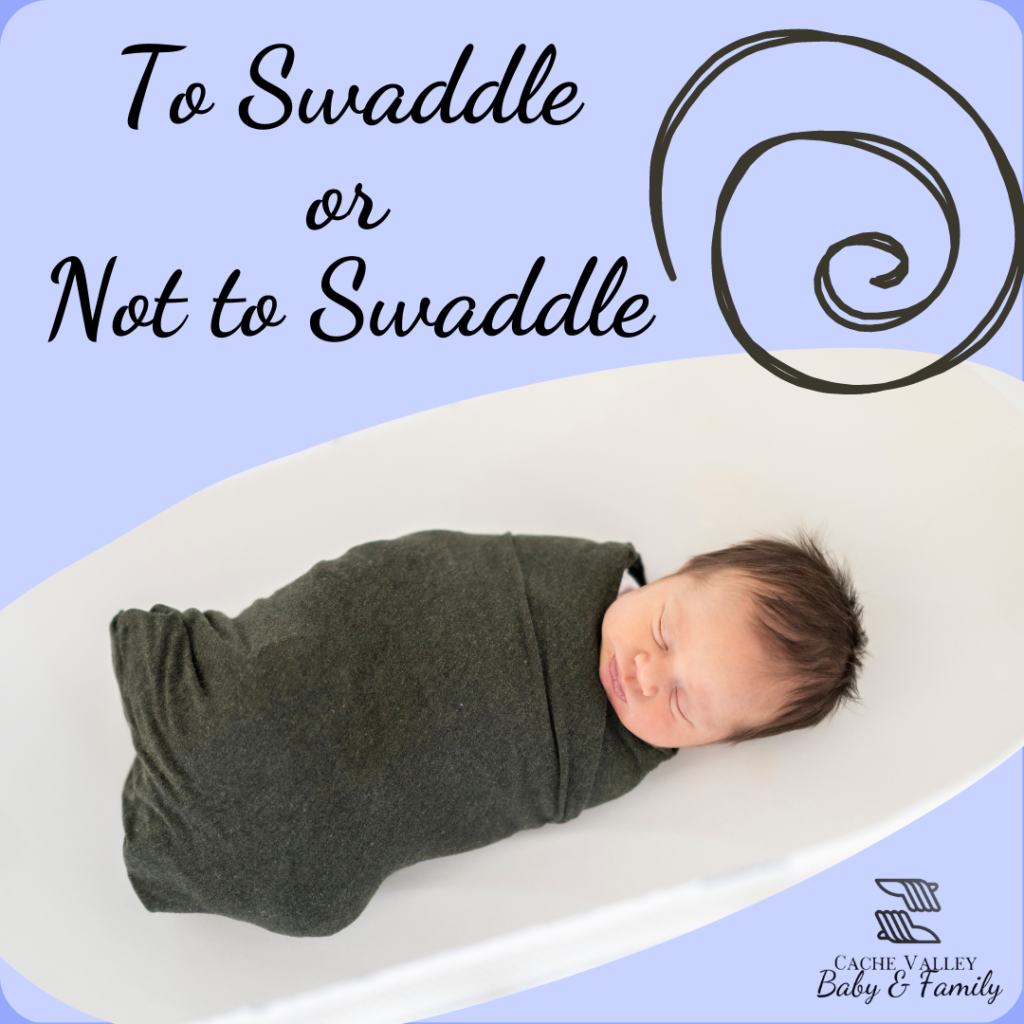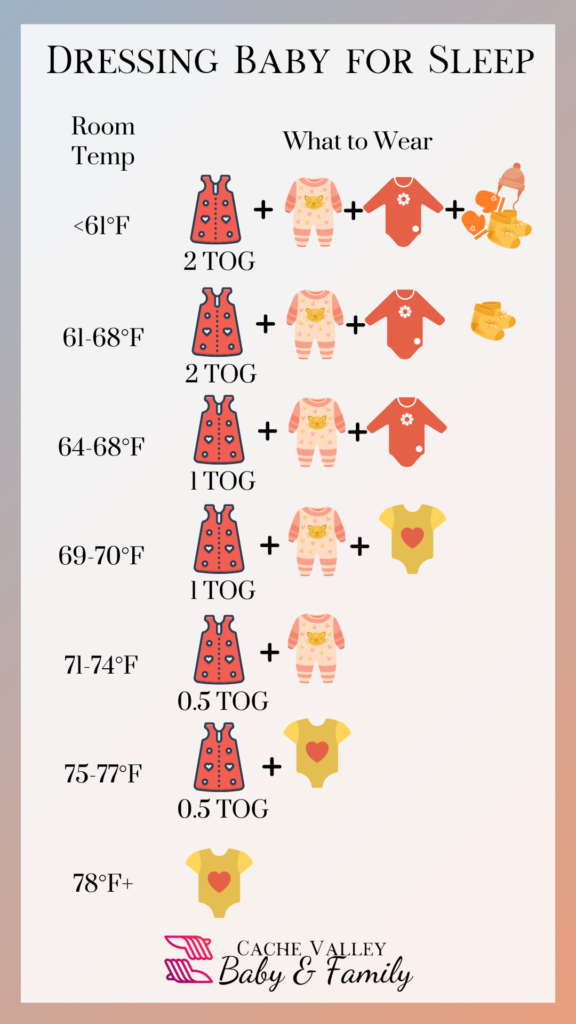One of the most common questions about infant care I hear is, “Do I need to swaddle my baby?”
The short answer is no. The long answer is a little more complex, and even discusses the should version of the question.

Benefits
There are a number of benefits to swaddling your baby. It may help them sleep more soundly, feel more comfortable, and calm them when fussy. Let’s discuss more.
Startling: the Moro Reflex
The Moro reflex is commonly referred to as the startle reflex. It’s one of your baby’s natural reflexes (like holding onto your finger with their hand), and it reaches a peak around a month old and is fading by two months old. After that, this startle reflex becomes a learned reflex not a natural one.
Swaddling helps to prevent the startle reflex by trapping your baby’s limbs by their side. This means they can’t startle themselves awake, though they may still be startled awake by something else.
Mimics the Womb
There’s no doubt that a tight swaddle helps to mimic the environment your baby lived in until born – a tight, cozy space. Add some white noise and blackout blinds, and you’ve done your best job at mimicking this environment completely. There are good and bad aspects of this, but it is likely going to be especially useful if you mainly keep it when your baby is sick or stressed – it gives them a familiar environment, but also allows them to learn their new environment (after all, they will never reenter the womb).
Down Sides
While swaddling is beneficial in some ways, it’s also a matter of discussion because we’ve been finding more down sides to swaddling in recent decades.
Hip Restriction
This is the down side most people have heard about. When a baby is tightly swaddled head to toe, there is a risk that the hips don’t have the ability to develop and move properly. Luckily there’s a simple solution to this: swaddle tightly around the chest and arms, and leave the legs loose so your baby can kick them freely.
Teaching a Startle
We discussed suppressing the Moro (startle) reflex in the benefits, but it actually may be a down side as well. This is especially true of babies that are constantly swaddled. The Moro reflex is a natural one present at birth, but can also be a taught reflex that continues well past the natural reflex disappears. Using a swaddle essentially teaches a baby that any movement is too much movement – so they are more likely to wake themselves when they move. You can find a good balance by giving baby plenty of time without a swaddle, such as naps and waking with no swaddle and overnight with a swaddle.
When to Stop Swaddling
As soon as your baby starts showing any signs of attempting to roll, you should immediately stop swaddling. For most babies, this is around 6-8 weeks old. Your baby may roll for the first time when you aren’t watching, so watching for these signs is important. You may see
- baby kicking up and arching their back to attempt to roll.
- trying to push up on their hands or lifting their shoulders more on their front.
- partially rolling, to their shoulders or side.
- rocking themselves from side to side using hands, shoulders, hips, and/or legs.
Swaddling is dangerous once a baby is developmentally ready to roll for a few reasons:
- Arms-in swaddling restricts a baby’s ability to reposition themselves.
- All swaddling provides chest compression, which makes your baby breathe faster than usual, causing less oxygenation of blood.
Once your baby shows signs of rolling, you shouldn’t move to “transitional” swaddles, as the chest compression is still present. It may cause 1-3 rough nights, but your baby will adjust to no longer having a swaddle during sleep quickly without spending money on a product that won’t last and generally isn’t doing much. If you’re worried about transitioning out of the swaddle, I recommend starting to provide opportunities for your baby to sleep without a swaddle around 4 weeks old (even if it’s only for naps).
What to Transition To
The great news is that there are plenty of cute, cozy things to transition your baby into. You can use warm pajamas or sleep sacks. Don’t forget to check how many layers your baby should be wearing to sleep! Here’s a quick image guide (more in this article).

So do you need to swaddle your baby? No. Should you? Maybe. There are benefits, but there are also some down sides of swaddling. I approach it as a tool in the toolbox, but not one that should be used constantly. Used in moderation, swaddling has a soothing effect on most babies. However, when used constantly it becomes a crutch, and one that’s outgrown within a few short months.

About the Author
Hi! I’m Liza, the owner and founder of Cache Valley Baby & Family. I do a lot of different things, including postpartum doula support, fertility awareness instruction (with a focus on conception), infant feeding support, and perinatal class instruction. I have a passion for working with families and women.
In my perinatal classes and postpartum support, I’ve worked with families from all walks of life, supporting them through their unique journeys. I particularly enjoy watching people become more confident in their own abilities as they go through my classes.
I love teaching fertility awareness. Because of the rest of my services, my focus is mainly on charting for conception, but I’m also experienced and happy to teach those charting to avoid pregnancy or to track their health. I have experience helping people chart with PCOS, thyroid disease, and more. I trained as an instructor through NFPTA.
All of my classes can be taken online from anywhere around the world, and I also hold local classes in Cache Valley, Utah. If you’d like to work with me, go ahead and reach out!
Leave a Reply